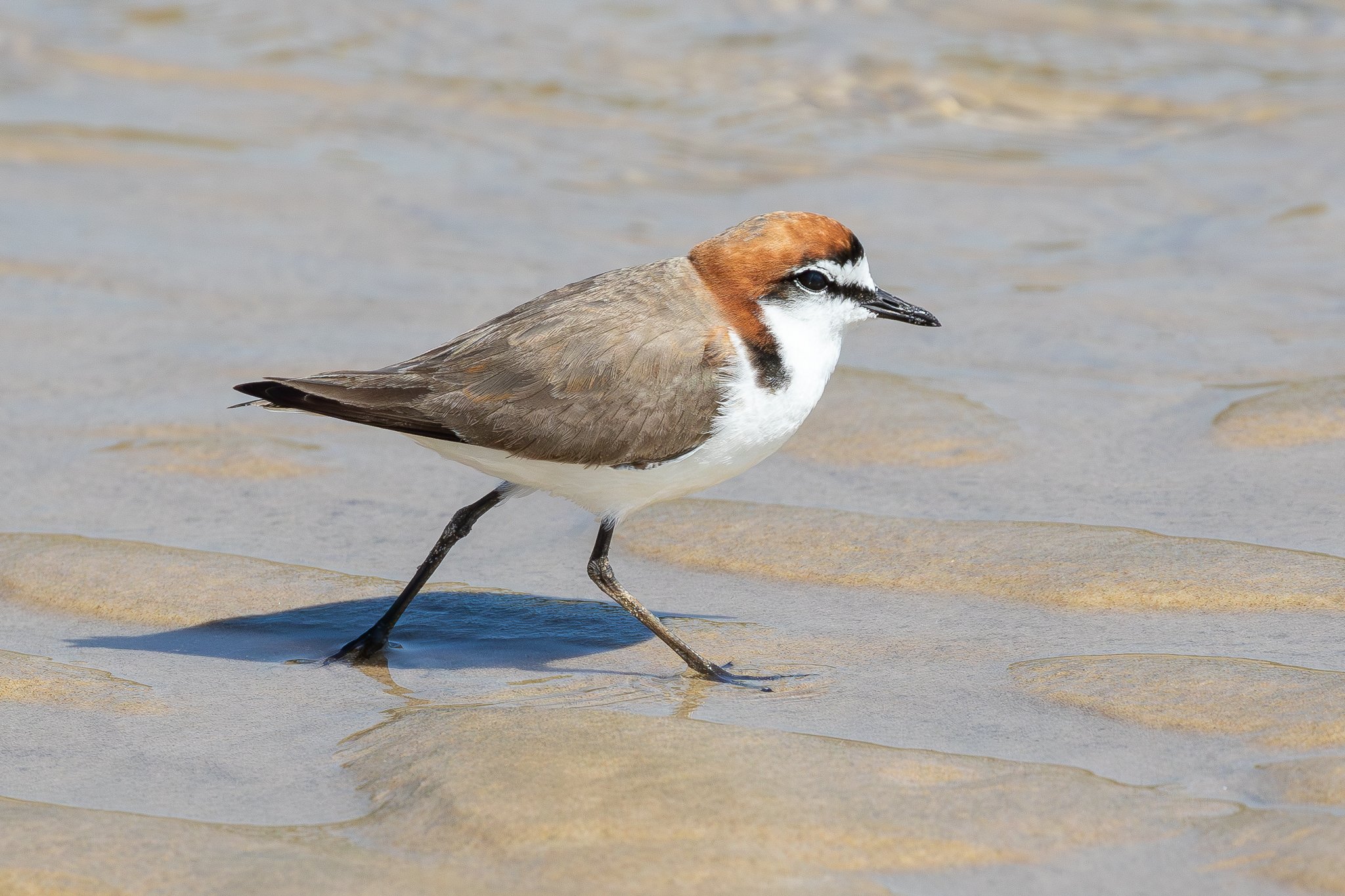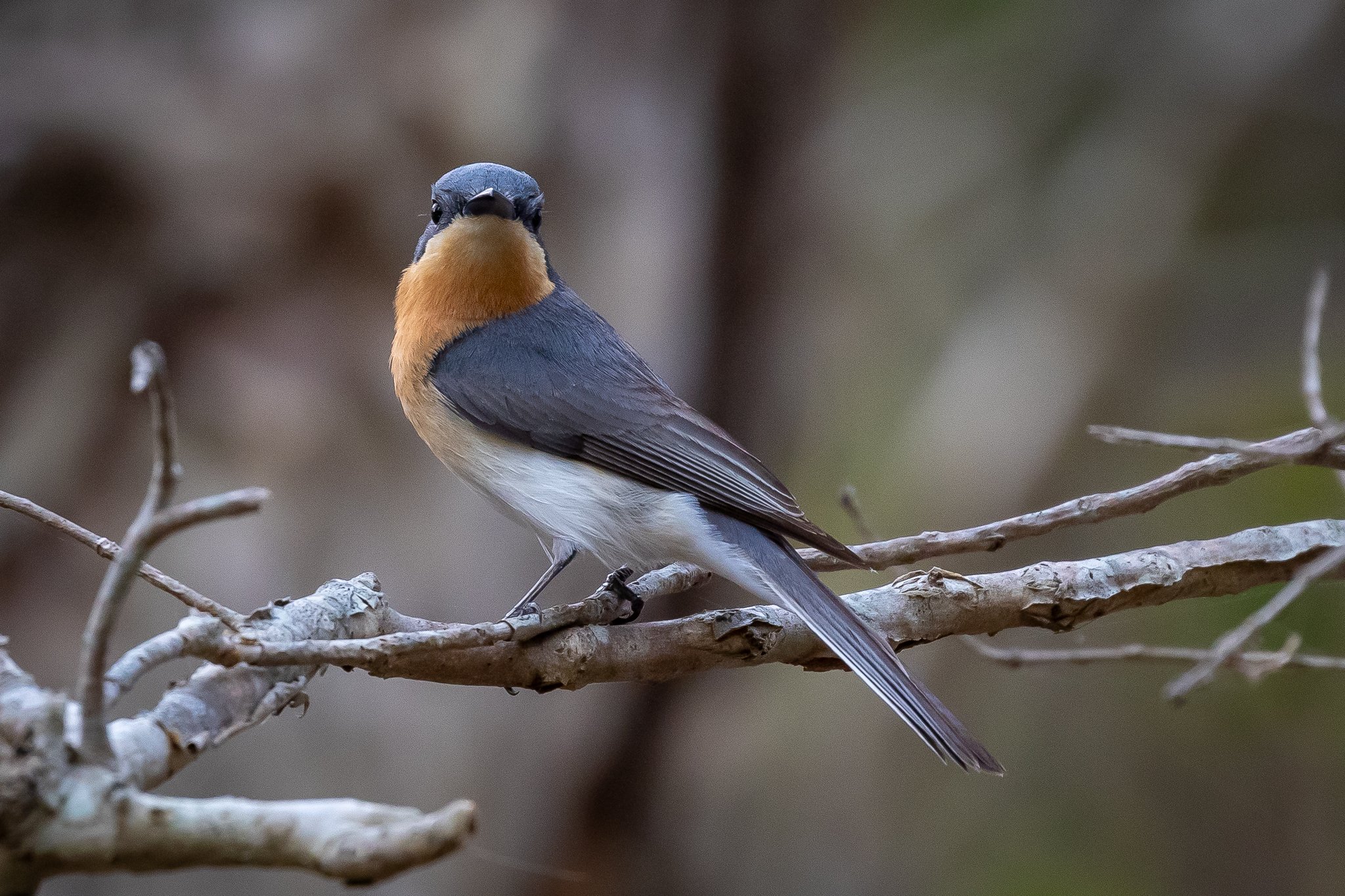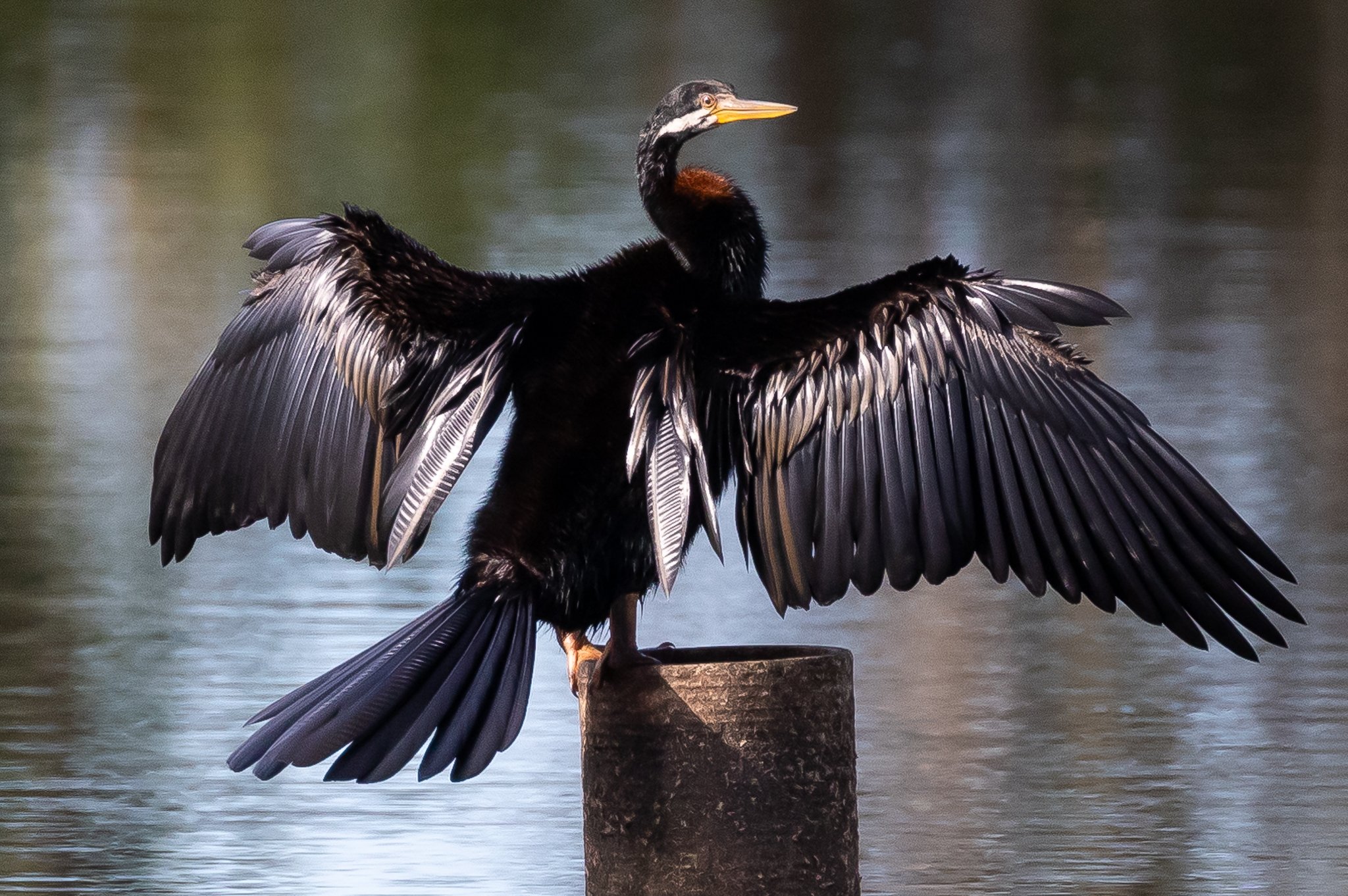Bird numbers are down in the hot weather over Christmas but still much to see in the wetlands. Yesterday’s visit highlights were a flock of six Nankeen Night-Herons, juvenile Leaden Flycatchers and a juvenile Restless Flycatcher, all seen on the second path through F Cell. The Latham’s Snipes have dispersed to the various drains, with five seen in total.
These Leaden Flycatchers have been calling at this spot in Cell F for several weeks, but this was the first time I saw them together. Here is the female Leaden Flycatcher.
The male Leaden Flycatcher was close by.
And not too far away this Restless Flycatcher near its nest directly above the track. One chick, transitioning from juvenile colours, was close to the nest.
Swamp Wallably, often be seen around the wetland entrance. Here keeping an eye on proceedings for some 60 seconds before turning and rushing away.
Eastern Yellow Robins keep to the “rainforest’" patch of the wetlands, preferring the heavier shade and coolness.
Yellow Thornbills are not that often seen here, they have been visiting the last two weeks.

































































